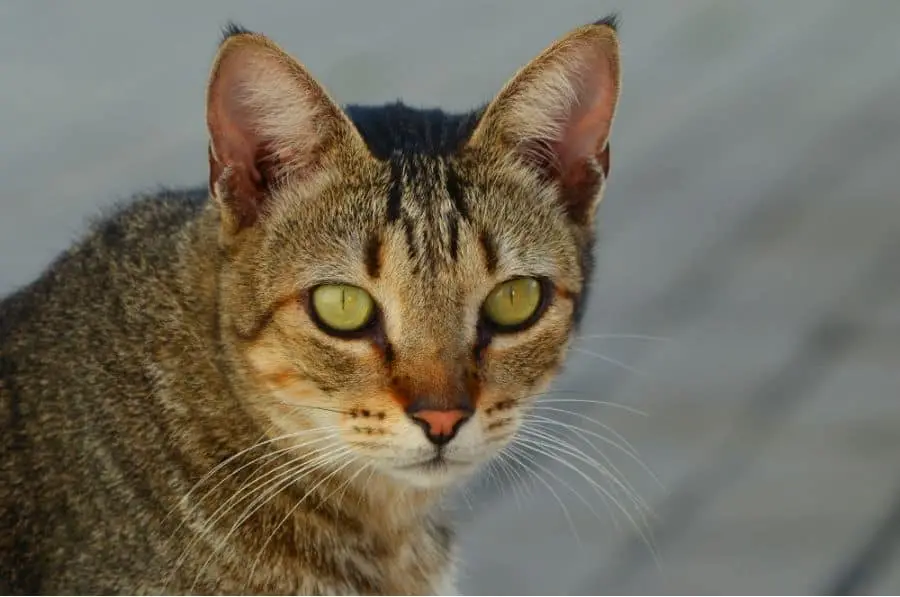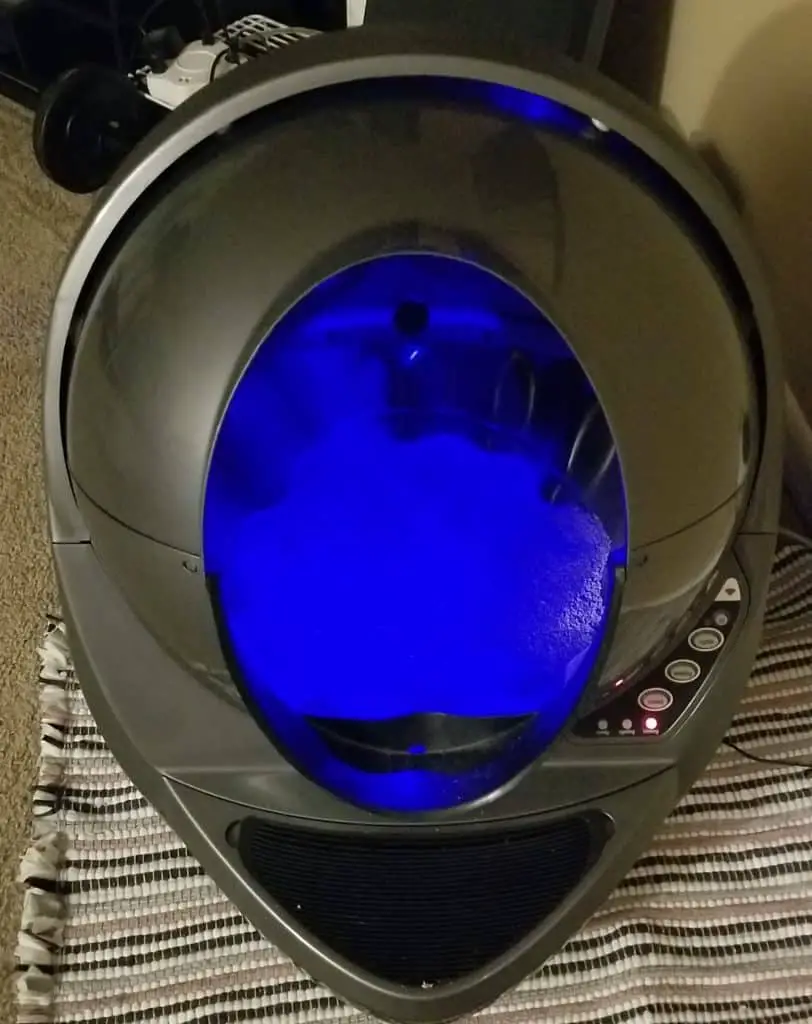More Meows is an Amazon Associate. As an Amazon Associate we earn from qualifying purchases. We may also earn commissions if you purchase products from other retailers after clicking on a link from our site.
If you live in an area that is home to a colony of feral cats, odds are you have witnessed a group of kittens left alone at some point. However, this does not necessarily mean that their mother has abandoned them. So, do feral cats abandon their kittens?
Feral cats do not intentionally abandon their kittens. There are circumstances, such as hunting, that demand the mother to be away from the kittens for some time, after which she would hopefully return with nourishment for her young.
Feral cats live by vastly different rules compared to domesticated cats, and it takes much more than a group of kittens dwelling alone to determine whether they have been abandoned or not. Stick around to find out more about feral cats and how they spend time away from their young.
If you are wondering what the best products are for your cat, check out this article that will break down all my recommendations for you: Things To Buy For A Cat Right Now!
Do Feral Cats Abandon Their Kittens?
In many cases, humans intervene far too quickly in the hopes that they are doing something good and helpful for the kittens. However, often, these interventions result in more harm than good, and groups of kittens should not be ‘rescued’ from the outside world unless it has become clear that they have indeed been abandoned or if they are in immediate danger.
Why Do Feral Cats Leave Their Kittens?
The act of ‘rescuing’ too soon may result in kittens being taken from their mothers without necessary cause, which can even lead to some of these kittens’ death. Most cases of a feral cat mothering a litter are characterized by the litter being left alone for several hours at a time, which can often cause onlookers to assume that they have been abandoned.
However, feral cat mothers need to leave their kittens at some point to find food and nourishment for them, after which she would return and care for them. This is particularly because feral cats survive off of rodents, birds, edible rubbish, and carcass remains, which necessitates hunting to acquire.
Sadly there are some situations where it is clear that feral kittens have no mother caring for them, which is not always due to mothers abandoning their young. While there are some cases of cats abandoning their kittens, this is not normal for feral cats, and there may be circumstances that result in the mother’s inability to return to her young. This can be due to various situations, such as the mother feral cat being injured, attacked, or hit by a car.
In some cases, the kittens may be witnessed as dwelling alone, but the mother may even be scared off by the presence of concerned humans since feral cats are not accustomed to humans as domesticated cats are.
The mother may very well be lurking nearby, watching and patiently waiting for you to leave, and she would be deeply saddened to witness her babies being taken from her. Additionally, feral cats who are mothering a litter will not abandon their kittens after humans have touched them.
Feral cats need space of at least 30 feet from humans to be relatively comfortable. Cats have lived in the wild for thousands of years and have survived without the assistance of humans. Humans have domesticated cats as indoor companions, but this does not mean cats have become incapable of caring for themselves.
You may wonder if feral cats need a water source. Check out my article on if feral cats need water: Click Here.
How to tell if a Kitten is Abandoned

A few key indicators tell if the kittens are indeed abandoned or if their mother is simply away at the time. If the kittens are clean or are peacefully sleeping in a ‘nest,’ odds are that the mother is simply away at that time. Most scenarios where the kittens appear to be well kept and are grouped in a ‘nest’ indicate that they are being cared for.
However, if the kittens are dirty, have crusty eyes, are crying uncontrollably, appear malnourished, and the mother has not been observed for several hours or days. They may have been abandoned or may have lost their mother in a tragic incident before she returned to them. If it’s been observed that the kittens have not been moved at all for some time, it is also possible that no mother is caring for them.
To be sure, one can scatter some flour around the box and wait to see if any adult paw prints appear since this could indicate a mother’s presence. However, it should be noted that there are many cases of abandoned kittens that do necessitate intervention. Kittens found alone, either roaming or placed in a bag or box, are unlikely to be feral but should be rescued since a human likely abandoned these kittens.
How long do Feral Cats Stay with their Kittens?
Feral cats mothering a litter care for their young up until the time where they begin weaning, can feed themselves, and can eat solid foods. This typically occurs at around 5 – 6 weeks of age if the kittens have been cared for properly with sufficient food, water, shelter, and warmth and are not suffering from any illnesses which may inhibit their natural development.
However, this does not necessarily mean that the mother will leave them never to be seen again after this point. Since feral cats generally roam in groups for safety, ease of hunting techniques, and various other practical reasons, they may stay together and live within the same colony of feral cats.
Can Feral Kittens Survive on Their Own?
Feral kittens cannot feed themselves in the early stages of growth and need to be fed by their mother through nursing or being bottle-fed by a human to survive. It is only when feral kittens reach around four weeks that they may begin nibbling at soft or wet foods, and they are generally capable of eating without assistance at around six weeks.
How Do Feral Cats Survive?
These are the most important stages of growth for kittens, and it’s ideal if the mother can care for them during this time. Surviving as a feral cat is far more complex than simply being able to feed independently.
The conditions created by a feral cat caring for her young within the outside environment allow the kittens to begin learning how to live in that environment, according to the incredibly special way of life that feral cats live by.
If the kittens are not exposed to certain lifestyle skills such as hunting, hiding, and finding shelter, likely, the kittens would not survive as feral cats once they reach the appropriate age, even if they can eat on their own.
This is another reason why feral kittens must be allowed to grow up with their mothers in this environment if possible, as they may not survive if let back out into the outdoor world at a later stage without these skills.
How often do Feral Cats move their Kittens?
Feral cats move their young very often, and there is no specific number of movements that is standard for them. The mother will move her young whenever and wherever she feels fit, and this can be due to a wide range of influences. If feral cat mothers move their children it is because they feel like it needs to be done.
Why do Feral Cats Move Their Kittens?
Such situations include but are not limited to scenarios where she is trying to shield them from potential threats like humans or stray animals, is trying to find a place that provides increased sheltering and warmth, or simply wants to relocate to a place with more access to food and water.
In many cases, kittens that are incredibly young and have not weaned are moved around almost constantly by feral cats. Often, such continuous movements may also come down to the mother attempting to protect her young while she is away, as only she is aware of their location at any given moment.
This is another reason why moving kittens may cause problems, as the mother may not find them and care for them.
While witnessing a group of innocent kittens outdoors can strike a spark within any animal lover, it does not always necessitate action. Things may not be as bad as they seem, and these feral kittens may be doing fine on their own.
Depending on the scenario, you may not be doing as much of a good deed as you thought. Even though feral cats are not trusting with humans, they will still appreciate indirect forms of support.
You may leave out resources nearby (be aware of your local laws around this) but not at your home, including water, dry food, which has more calories for nursing mothers, and even build a shelter in the hope that the mother may make use of it. Always consult professionals before determining if the kittens are abandoned or not, and weigh up all potential risks before committing to an action.
Conclusion
Feral cats aren’t going to deliberately “abandon” their kittens. Unlike your house cat, a feral cat will likely go out and hunt to find nourishment for themselves and their kittens. A person may come along and see feral kittens without their mother cat for a few hours and think they have been completely abandoned. Personally, if it were me, I would give the local ASPCA a phone call and have them check it out since they are professionals.
If you enjoyed this article, please check out a few others:
- Can Stray Cats Be Friendly? Read These Simple Reasons: Click Here.
- Do Stray Cats Kill Kittens? Rare Cat Murder: Click Here.
- Can Stray Cats Survive A Hurricane? The Revealing Ways: Click Here.
Here are some of my favorite cat products
In addition to checking out some other More Meows articles, I hope you’ll check out some of my favorite cat products as well. These are affiliate links, so if you end up using them, I’ll get a commission at no extra cost to you. These are the products I really do find most helpful.
Litter Box: I started out with normal, traditional litter boxes for my cat. Then, I tried this automatic litter box on Amazon (affiliate link), which helped reduce the litter upkeep. Finally, I am now a believer in the Litter-Robot 3 Connect on Amazon (affiliate link). This robotic litter box is not for everyone based on the price tag, but for me the benefits (very little upkeep, works efficiently, clean, mobile app) far outweighed the cost.

Cat Tree: I have purchased a couple of this Amazon Basics Cat Tree on Amazon (affiliate link). My cat spends a lot of time on and around this cat tree, which I position near my sofa. She uses the scratching posts on this cat tree multiple times a day, which means she is not scratching the sofa instead.
Cat Water Fountain: I love this cat water fountain on Amazon (affiliate link). There are three main benefits to having a water fountain like this for your cat. The first benefit is that it keeps water running so that your cat doesn’t need to drink still water. The second benefit is that it filters the water. The third benefit is that it will keep your cat hydrated!
